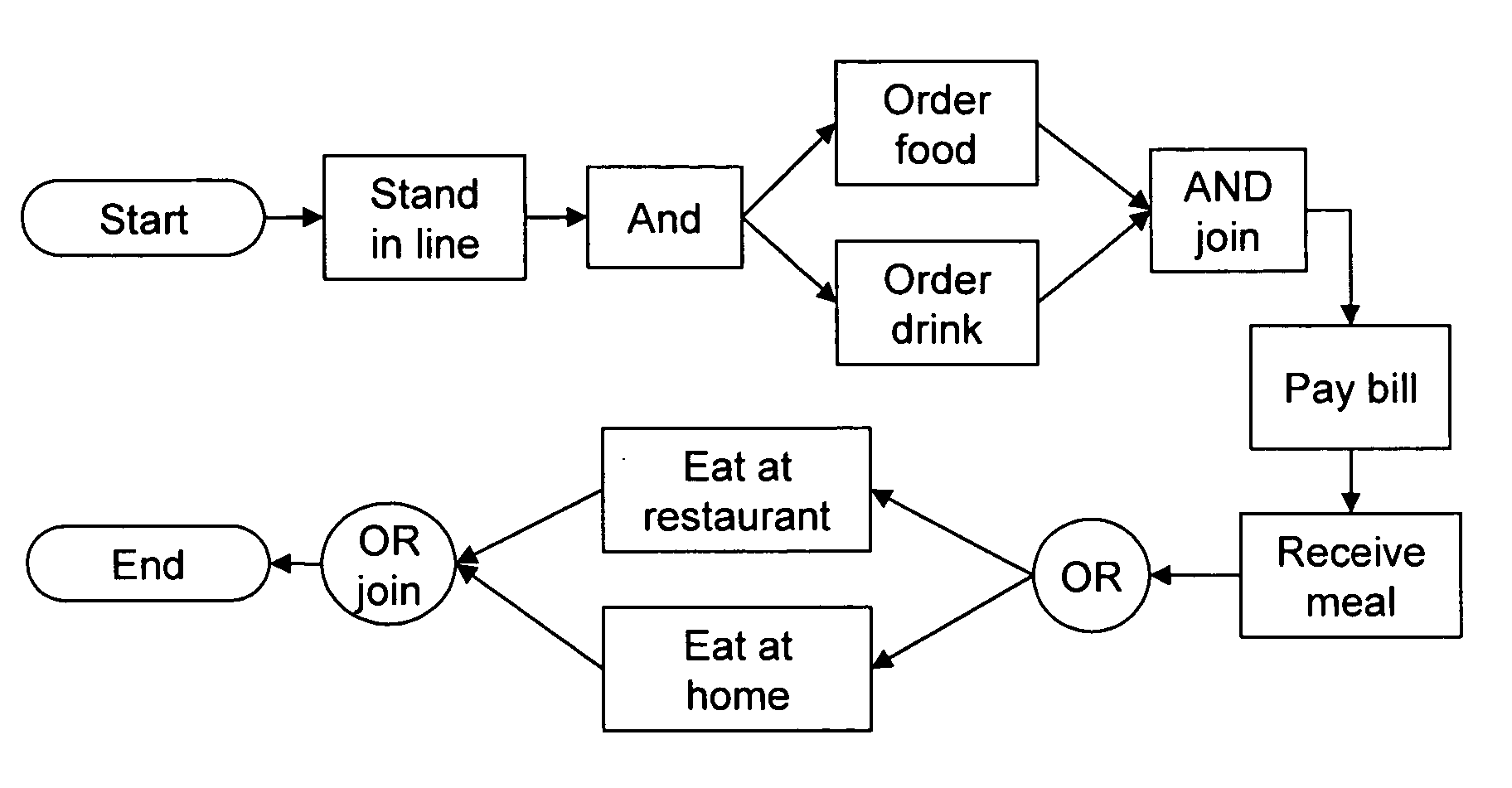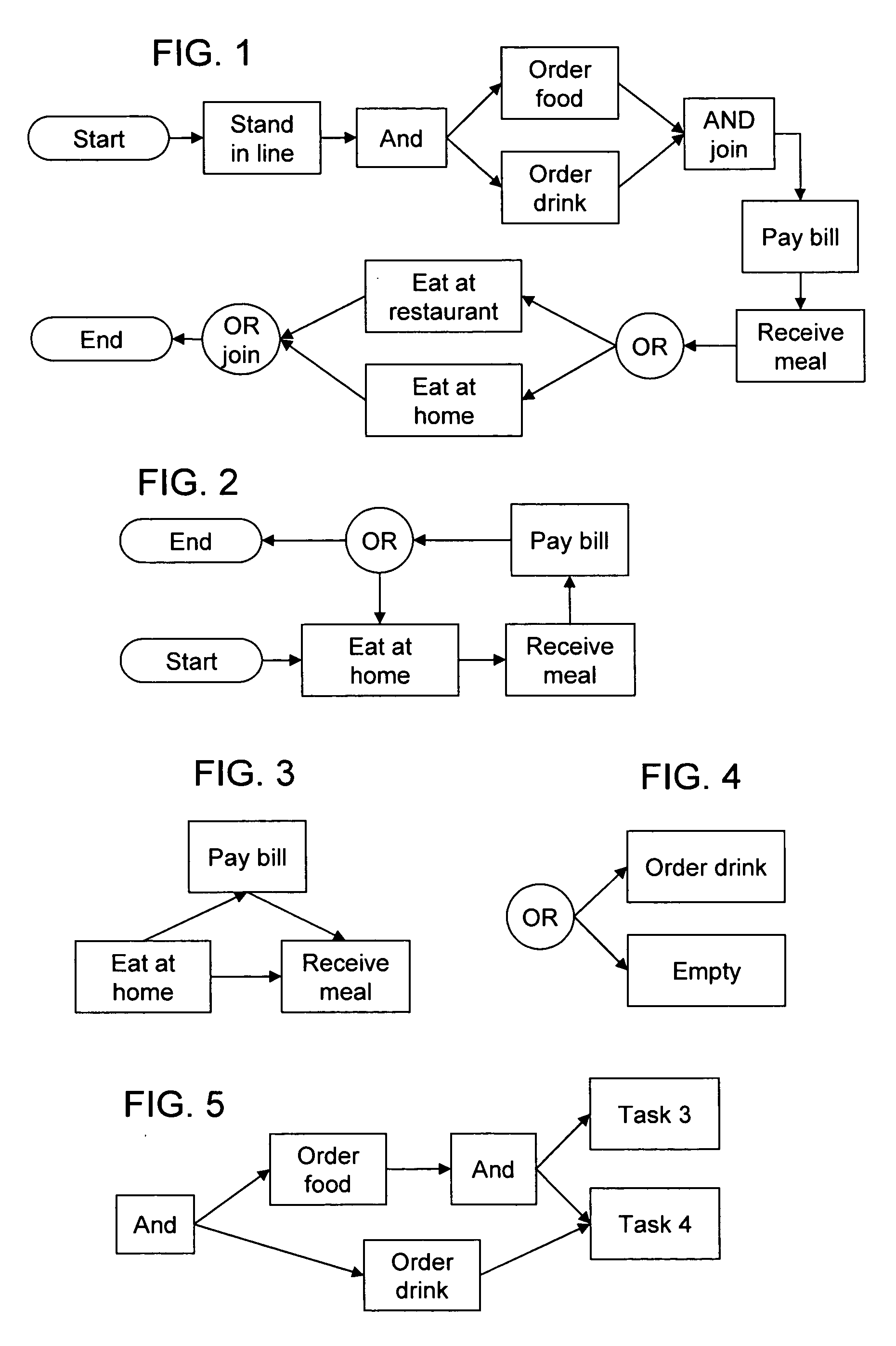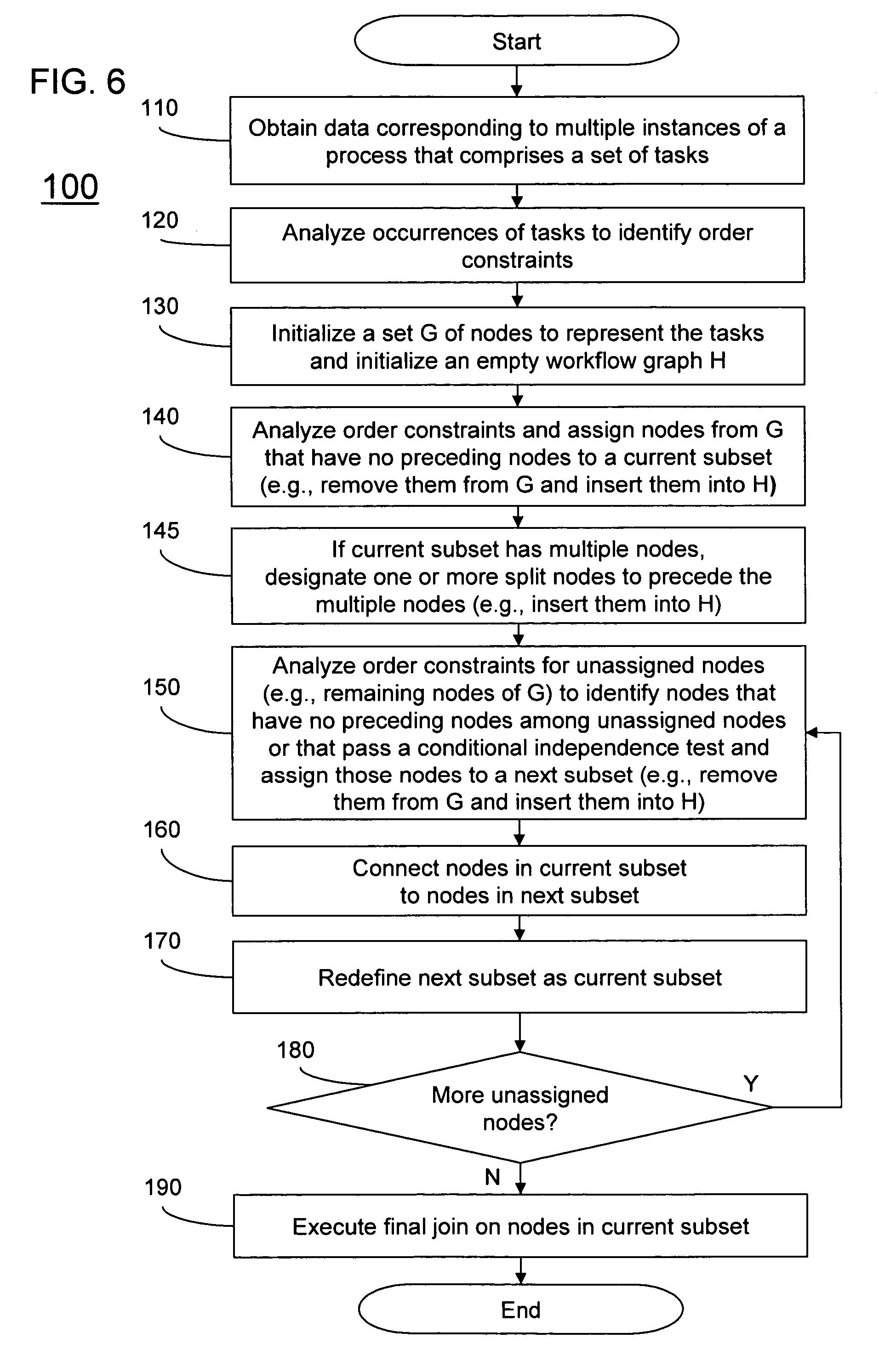Method and apparatus for probabilistic workflow mining
a probabilistic workflow and graph technology, applied in the field of probabilistic workflow mining, can solve the problems of a formidable task of hand-held workflow based on human observations, and the business often does its activities without the benefit of formal workflow, so as to facilitate the optimization of those processes and improve the understanding of processes used
- Summary
- Abstract
- Description
- Claims
- Application Information
AI Technical Summary
Benefits of technology
Problems solved by technology
Method used
Image
Examples
example
[0298] An example of how LearnOrderedWorkflow works will now be described for hypothetical data. Assume for now that the hypothetical graph G in FIG. 11 corresponds to a true generative model, i.e., a true process, from which we know the ordering oracle O and I for tasks {1, . . . , 12}. The following discussion will demonstrate how LearnOrderedWorkflow is able to reconstruct G out of O and I. In this example, numbered circles represent nodes that correspond to tasks, diamond shapes represent OR splits or OR joins, and blank circles represent AND splits or AND joins. Nodes without label represent hidden tasks in the sense that they are not directly observable tasks in the case log file.
[0299] Suppose that a directionality graph G is given in FIG. 12, i.e., graph G represents nodes of the set G with directed edges inserted between pairs of nodes based on order constraints of the ordering oracle O. It is not necessary to actually create this graph in carrying out the methods describe...
PUM
 Login to View More
Login to View More Abstract
Description
Claims
Application Information
 Login to View More
Login to View More - R&D
- Intellectual Property
- Life Sciences
- Materials
- Tech Scout
- Unparalleled Data Quality
- Higher Quality Content
- 60% Fewer Hallucinations
Browse by: Latest US Patents, China's latest patents, Technical Efficacy Thesaurus, Application Domain, Technology Topic, Popular Technical Reports.
© 2025 PatSnap. All rights reserved.Legal|Privacy policy|Modern Slavery Act Transparency Statement|Sitemap|About US| Contact US: help@patsnap.com



